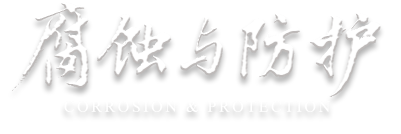Abstract:
In a supercritical CO
2/crude oil/simulated produced water corrosion environment (CO
2 pressure of 9 MPa, temperature of 65 ℃) simulated by high temperature and high pressure reactor, immersion corrosion tests were conducted on N80 carbon steel to investigate the effects of emulsifier and water content in emulsions on the corrosion rate, microscopic morphology of corrosion product films, elemental composition of corrosion product films, and maximum corrosion depth of N80 carbon steel. By observing the morphology of emulsions before and after adding emulsifiers and measuring changes in the contact angles of crude oil and simulated produced water on the surface of N80 carbon steel, the influence mechanism of oil-water emulsification on supercritical CO
2 corrosion was determined. The results show that under emulsifier-free condition, the corrosion rate of N80 carbon steel in the supercritical CO
2/crude oil/simulated produced water system increased with rising water content. When the water content was below 50%, uniform corrosion occurred in N80 carbon steel, whereas localized corrosion developed when the water content exceeded 50%. Under the condition of 0.5% emulsifier addition, the corrosion rate of N80 carbon steel increased with rising water content. However, when the water content exceeded 50%, the corrosion rate remained relatively stable, and uniform corrosion was observed throughout all water content levels. Under identical corrosive conditions, N80 carbon steel exhibited lower corrosion rates without emulsifier addition compared to cases with 0.5% emulsifier. The introduction of emulsifiers altered both the properties of oil-water emulsions and their wettability on N80 steel surfaces, consequently modifying the corrosion rate, maximum corrosion depth, and corrosion morphology in supercritical CO
2/crude oil/simulated produced water environment.

 下载:
下载: